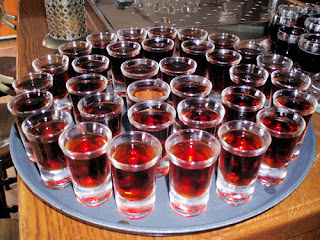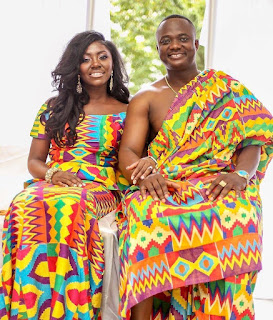wedding traditions in iraq
The number seven seems to be an auspicious number throughout many cultures and no less so for Iraqis. Traditionally, their weddings would consist of seven steps and rituals, today some of these steps can merge. They also share many traditions with their Iranian neighbours, namely the ‘bride’s table’ or ‘Mez al Sayed’ in Arabic and ‘Sofreh-ye Aghd’ in Persian. I was fascinated to learn of unique customs practiced during their celebrations.
Mashaya & Sharbet
Men from the groom’s family go to meet the men on the bride’s side with a formal marriage proposal. The bride-to-be is asked formally by her father if she will accept the offer of marriage. Once she agrees the Fatiha is read and then the families celebrate by sharing ‘sharbet’ which is a delicious fruit coridal often flavoured with rose water and pomegranate. Turkish coffee and dessert is also served.
Engagement
The engagement requires an exchange of rings for each - usually gold for the woman and silver for the man placed on their right hand ring finger. They celebrate with a dinner at the woman’s home with both families.
Nishan
The Nishan is the offering of generous gifts for the bride from the groom and his family – gold, jewellery, clothes, shoes. There will be religious readings and blessings, all of which vary from family to family. Nishan could be a simple dinner at the bride’s home or something more extravagant. In the past the woman would have changed her dress seven times during the evening, each time it would be a different colour. Now, maybe just one or two outfits!
If this is a marriage of a Muslim couple they will meet with the imam or sheikh, two or three days before the wedding party to sign the contract. At this stage the bride and groom are in separate rooms. The bride is wearing a simple white nightdress with no jewellery or adornments, this is to represent that life is to be natural, relaxed and easy between the couple.
The bride is asked by the imam if she accepts the groom but she waits until she is asked at least three times before she agrees. Actually the bride can string it out for longer if she wishes! Once the contract is signed the groom comes into the room and kisses her. She then goes to another room to change into a dress that her mother-in-law has bought her. They are seated at the elaborately decorated table ‘Mez al Sayed’, which faces East so the couple face towards the sunrise. All the carefully placed items symbolise love, peace, respect, prosperity, fertility and happiness for the couple’s union.
Mez al Sayed Items
A mirror is facing them with a candelabra on either side; the Holy Book; specially baked and decorated flatbread with a calligraphy blessing; a basket of decorated eggs and a basket of decorated almonds, walnuts and hazelnuts in the shell; pomegranates & red apples; a cup of rose water extracted from special Persian roses ‘Gol-e Mohammadi’ to perfume the air together with burning incense. A bowl of gold coins and a treasure box with pearls & crystals.
A tray of seven herbs and spices ‘Sini-ye Aatel-O-Baatel’ - Wild Rice; Angelica; Salt (to blind the evil eye); Nigella Seeds; Black Tea, Frankincense (to burn the evil spirits)
Tray of seven white foods which represents purity – sugar; flour; rice; cheese; cream; milk; yeast.
A cup of honey to sweeten the bride & groom’s life - they each dip a pinkie finger in the honey and feed it to each other.
A silk shawl is held over the couple’s head by female relatives while two sugar cones are rubbed together to shower them with sweetness and symbolising a happy life together.
Cardamon pods are put between the bride’s fingers and she places her feet in a bowl of water sprinkled with green leaves.
During all this the bride has had a sugar cube under her tongue; she now puts the remainder of the sugar from her mouth into a glass of orange juice that the groom politely drinks. True love!
Henna Evening
Either that evening or the next the women celebrate usually at the bride’s house – music, dancing, dinner and henna. The bride’s mother- in- law places a coin and piece of henna in her hand, which she holds so it is then imprinted on her palm.
The groom celebrates with his male friends and family at his house or a restaurant.
Wedding Celebration
Finally the party – the groom and his entourage make their way to the bride’s home to collect her. His male family members and friends will be hanging out of their cars tooting horns and singing and basically making as much noise as possible! Everyone must know a wedding is happening. Once they reach the bride’s house the groom meets his beautiful bride adorned in her white dress and veil and escorts her and the bridal party to the venue, usually at a hotel.
Before they enter, traditional musicians (Zaffa) will precede the couple into the beautifully decorated venue. If the couple were living in a town or village the Zaffa would meet them at the bride’s house and they would play for the couple and their guests as they traveled to the venue, these days the musicians meet the couple at the venue for the procession. Added to this cacophony of noise the women will be ululating (Zaghareet). The bride, accompanied by her father, arrives with only the mezmar playing and the attending women will also do a lot of ululating (zaghareet). The bride and groom make their way to the stage where they sit on the sofa (kosha). The night is filled with entertainment, music, dancing and feasting and continues well into the early hours of the morning.
Traditionally on the seventh day after the wedding party, (or later depending on the honeymoon) the couple holds a celebration of their union at the groom’s house, usually just for the women. Guests would bring gifts for the newly wedded couple as a celebration of their union.
Mashaya & Sharbet
Men from the groom’s family go to meet the men on the bride’s side with a formal marriage proposal. The bride-to-be is asked formally by her father if she will accept the offer of marriage. Once she agrees the Fatiha is read and then the families celebrate by sharing ‘sharbet’ which is a delicious fruit coridal often flavoured with rose water and pomegranate. Turkish coffee and dessert is also served.
Engagement
The engagement requires an exchange of rings for each - usually gold for the woman and silver for the man placed on their right hand ring finger. They celebrate with a dinner at the woman’s home with both families.
Nishan
The Nishan is the offering of generous gifts for the bride from the groom and his family – gold, jewellery, clothes, shoes. There will be religious readings and blessings, all of which vary from family to family. Nishan could be a simple dinner at the bride’s home or something more extravagant. In the past the woman would have changed her dress seven times during the evening, each time it would be a different colour. Now, maybe just one or two outfits!
If this is a marriage of a Muslim couple they will meet with the imam or sheikh, two or three days before the wedding party to sign the contract. At this stage the bride and groom are in separate rooms. The bride is wearing a simple white nightdress with no jewellery or adornments, this is to represent that life is to be natural, relaxed and easy between the couple.
The bride is asked by the imam if she accepts the groom but she waits until she is asked at least three times before she agrees. Actually the bride can string it out for longer if she wishes! Once the contract is signed the groom comes into the room and kisses her. She then goes to another room to change into a dress that her mother-in-law has bought her. They are seated at the elaborately decorated table ‘Mez al Sayed’, which faces East so the couple face towards the sunrise. All the carefully placed items symbolise love, peace, respect, prosperity, fertility and happiness for the couple’s union.
Mez al Sayed Items
A mirror is facing them with a candelabra on either side; the Holy Book; specially baked and decorated flatbread with a calligraphy blessing; a basket of decorated eggs and a basket of decorated almonds, walnuts and hazelnuts in the shell; pomegranates & red apples; a cup of rose water extracted from special Persian roses ‘Gol-e Mohammadi’ to perfume the air together with burning incense. A bowl of gold coins and a treasure box with pearls & crystals.
A tray of seven herbs and spices ‘Sini-ye Aatel-O-Baatel’ - Wild Rice; Angelica; Salt (to blind the evil eye); Nigella Seeds; Black Tea, Frankincense (to burn the evil spirits)
Tray of seven white foods which represents purity – sugar; flour; rice; cheese; cream; milk; yeast.
A cup of honey to sweeten the bride & groom’s life - they each dip a pinkie finger in the honey and feed it to each other.
A silk shawl is held over the couple’s head by female relatives while two sugar cones are rubbed together to shower them with sweetness and symbolising a happy life together.
Cardamon pods are put between the bride’s fingers and she places her feet in a bowl of water sprinkled with green leaves.
During all this the bride has had a sugar cube under her tongue; she now puts the remainder of the sugar from her mouth into a glass of orange juice that the groom politely drinks. True love!
Henna Evening
Either that evening or the next the women celebrate usually at the bride’s house – music, dancing, dinner and henna. The bride’s mother- in- law places a coin and piece of henna in her hand, which she holds so it is then imprinted on her palm.
The groom celebrates with his male friends and family at his house or a restaurant.
Wedding Celebration
Finally the party – the groom and his entourage make their way to the bride’s home to collect her. His male family members and friends will be hanging out of their cars tooting horns and singing and basically making as much noise as possible! Everyone must know a wedding is happening. Once they reach the bride’s house the groom meets his beautiful bride adorned in her white dress and veil and escorts her and the bridal party to the venue, usually at a hotel.
Before they enter, traditional musicians (Zaffa) will precede the couple into the beautifully decorated venue. If the couple were living in a town or village the Zaffa would meet them at the bride’s house and they would play for the couple and their guests as they traveled to the venue, these days the musicians meet the couple at the venue for the procession. Added to this cacophony of noise the women will be ululating (Zaghareet). The bride, accompanied by her father, arrives with only the mezmar playing and the attending women will also do a lot of ululating (zaghareet). The bride and groom make their way to the stage where they sit on the sofa (kosha). The night is filled with entertainment, music, dancing and feasting and continues well into the early hours of the morning.
Traditionally on the seventh day after the wedding party, (or later depending on the honeymoon) the couple holds a celebration of their union at the groom’s house, usually just for the women. Guests would bring gifts for the newly wedded couple as a celebration of their union.








Commentaires
Enregistrer un commentaire